Every country, city, town and even village has its own national symbols that embody statehood and reflect the peculiarities of its people. For Americans, the main symbol of the struggle for their independence and statehood from British enslavement is the bell located in Philadelphia. But it is not a simple bell, as it may seem at first glance. It has a rich historical past and witnessed many important events. Learn more at philadelphia-future.
Creation of the bell
The bell with the symbolic name The Liberty Bell is located in Independence Hall, the very center of the historic part of Philadelphia. It was supposed to be a decoration of Independence Hall and was even hung in its spire. But now it is located in Independence National Historical Park, near the historic Independence Hall building, on one of the largest preserves of historical significance in the United States.
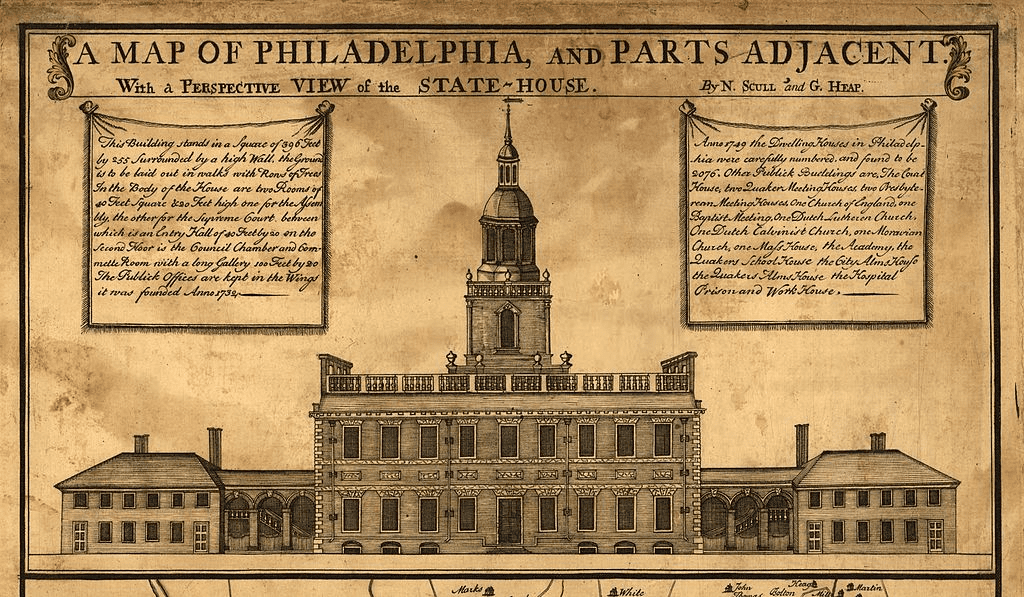
During the construction of Independence Hall in Philadelphia in 1752, the Assembly decided to decorate it with a bell with the inscription “Proclaim LIBERTY Throughout all the Land unto all the Inhabitants Thereof“. The quote was taken from the Bible, Leviticus 25.10.
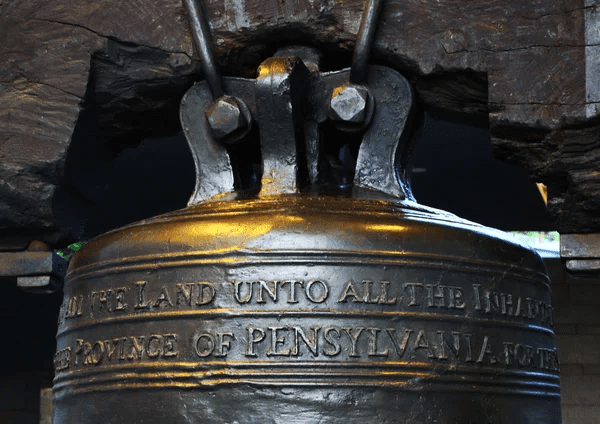
Photo source: ua.depositphotos.com, by toucanet
It was produced in England by the Whitechapel Bell Foundry. The English company specialized mainly in the manufacture of church bells but also undertook individual orders. The Whitechapel Bell Foundry also cast Big Ben ringing from London’s Clock Tower.
The bell weighs 943 kg. It is 1-meter-long and about 3.7 meters around the lip.
Reconstruction
When the Liberty Bell arrived in Philadelphia and was first struck, it cracked. Local founders, John Pass and John Stow undertook the reconstruction of the important object. They cast the bell twice and slightly changed its original composition. In their opinion, the original metal was too brittle and therefore cracked. It was decided to add copper to the main composition. Interestingly, the names of those two people were placed on the bell as its creators.
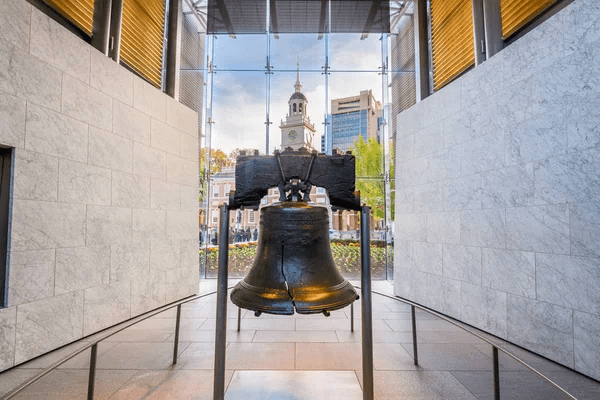
Photo source: ua.depositphotos.com, by sepavone
After that, the local authorities organized a loud celebration with free food and drinks. Everyone tried out a newly cast bell. It didn’t break on impact, but its sound was very different from the initial one. Many people didn’t like it.
The second and the third cracks
In 1777, after Washington’s defeat, Philadelphia was preparing for the attack of the British army. To produce the necessary weapons, founders began to melt metal objects, such as bells. People were afraid that such a sad fate might befall the Liberty Bell too, so it was decided to transport it to a safe place.
It was Zion German Reformed Church in Pennsylvania. The bell was hidden under its floor. It stayed in Allentown for about nine months. After the retreat of the British from Philadelphia, it was returned to the city. After the Declaration of Independence, the Liberty Bell was hung on the highest floor of the State House (now Independence Hall). It was used only for important purposes, such as convening a meeting.
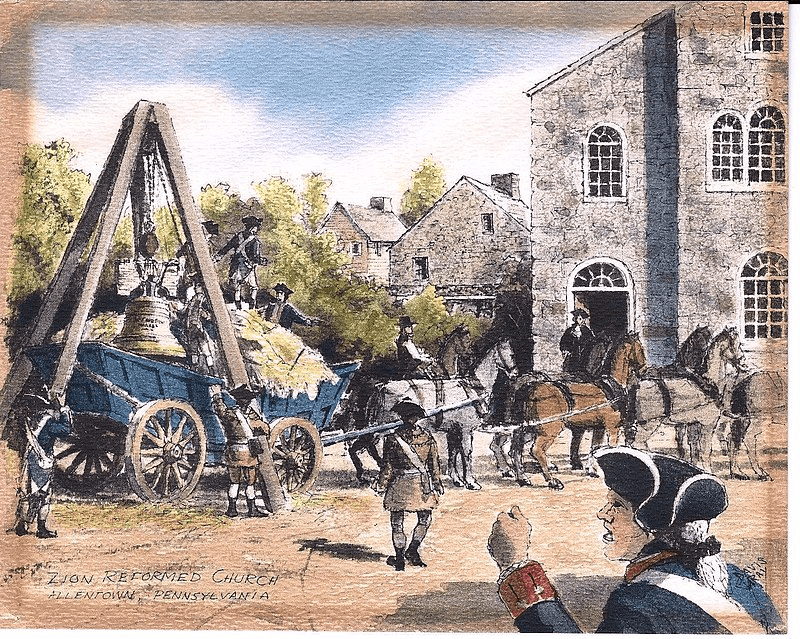
Arrival of the Liberty Bell at Zion Reformed Church in Allentown, Pennsylvania, on September 24, 1777. Photo source: en.wikipedia.org
The bell was constantly used to call legislators to a session or important announcements to the public and local residents. It was located on the spire of the State House in Philadelphia.
However, it cracked again. It happened in the 19th century. The event was associated with a number of stories. For example, they said that it happened after the death of John Marshall, the Supreme Court Chief Justice, in 1935. However, it is not the only assumption. And now it is difficult to say exactly when and under what circumstances it has cracked.

Photo source: ua.depositphotos.com, by f11photo
Some are convinced that it wasn’t connected with the death of the Supreme Court, but took place during the meeting of Lafayette, after the promulgation of the law for the support of British Catholics.
Still, it was used from time to time. But it only worsened the situation. The crack got bigger with each use. Then it was decided not to patch the crack but to leave everything as it is. They said that the third crack was formed after the birthday of the first US president, George Washington. Then the bell rang for several hours in a row.
How did the Liberty Bell become a symbol of struggle?
The Liberty Bell actually became a symbol of the struggle for American independence after the Declaration of Independence from Great Britain by the Second Continental Congress in 1776. But why did it happen, who made the bell famous and how?
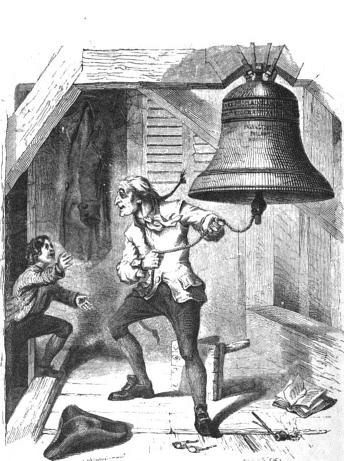
Photo source: books.google.com.ua
The American writer George Lippard brought the Liberty Bell into the context of American culture as a symbol of the struggle for freedom and independence. He described this important day of 1776 in his works. His story became so popular that it was constantly reprinted in various contemporary publications. It was even included in the school textbook.
The Liberty Bell and exhibitions
Since the end of the 19th century, this important historical object has been presented at many exhibitions and patriotic gatherings. People from the farthest corners of the USA came there to look at the famous Liberty Bell and touch history.
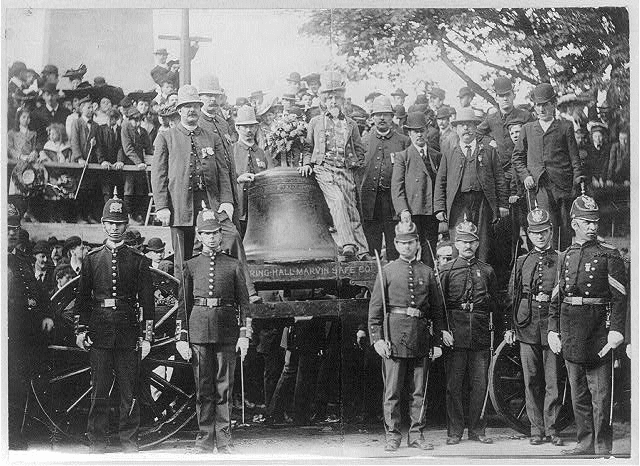
The Liberty Bell at Bunker Hill, Boston, 1903. Photo source: en.wikipedia.org
Unfortunately, it became the object of encroachments too. Some people wanted to take advantage of it and get rich. They chipped off pieces of the historic bell and sold them as souvenirs. Very soon, the authorities of Philadelphia made a decision to stop the public demonstration of the bell outside the city limits. The Liberty Bell has not left the city limits since 1915.
Unlucky bell?
The bell was damaged three times. But what were the reasons? Why did it not withstand the blows and crack? The answer to this question was given by researchers from the Museum of Ventura County who got interested in the history of the famous Liberty Bell. They conducted a number of studies and found out that mistakes were probably made at the very beginning of the bell creation and later during its reconstruction in the USA.
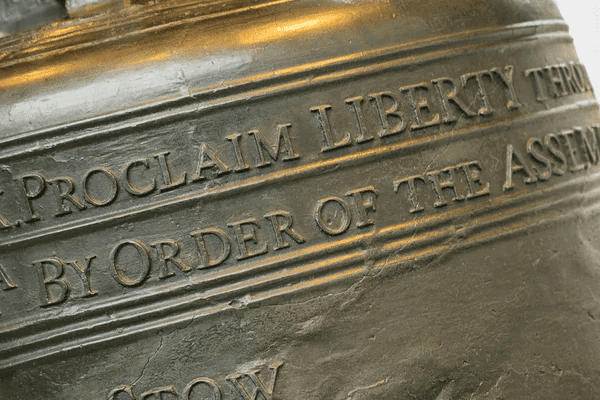
Photo source: ua.depositphotos.com, by paulbradyphoto
The Museum noted that the composition of the bell is somewhat different from similar objects of the same era. It consisted of a huge amount of tin. Gross mistakes were made in the composition and proportions. During the reconstruction and recasting of the Liberty Bell, a cheap alloy of tin and lead was added to the metal. It made the material extremely fragile.
The Liberty Bell during the World Wars
After the return of the bell to the city, the public could see it only a few times. It happened during high-profile events, such as the end of the First World War. During the Second World War, the authorities feared that the Liberty Bell could become the object of encroachments by ill-wishers. They wanted to move it to a safe place in Fort Knox, but this decision only caused public outrage.
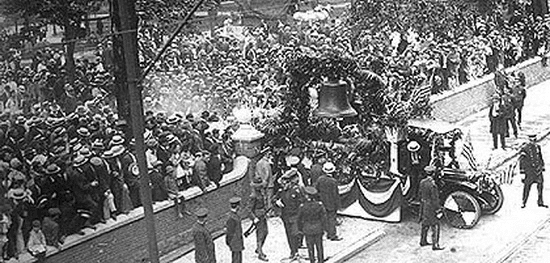
The bell remained in Philadelphia. After the end of the war, the authorities transferred the custody of the bell to the federal government of the city. Thus, the National Park Service became responsible for the preservation of this important historical object and its demonstration.
An attack on the historical bell
In 1973, it was decided to build a glass pavilion around the bell. The mayor at the time agreed with the idea. He proposed to install it near Chestnut Street. Very soon, the bell was moved to the glass and steel pavilion. After that, it was attacked several times. In 2001, a man struck the object with a hammer several times and left a deep dent on it.
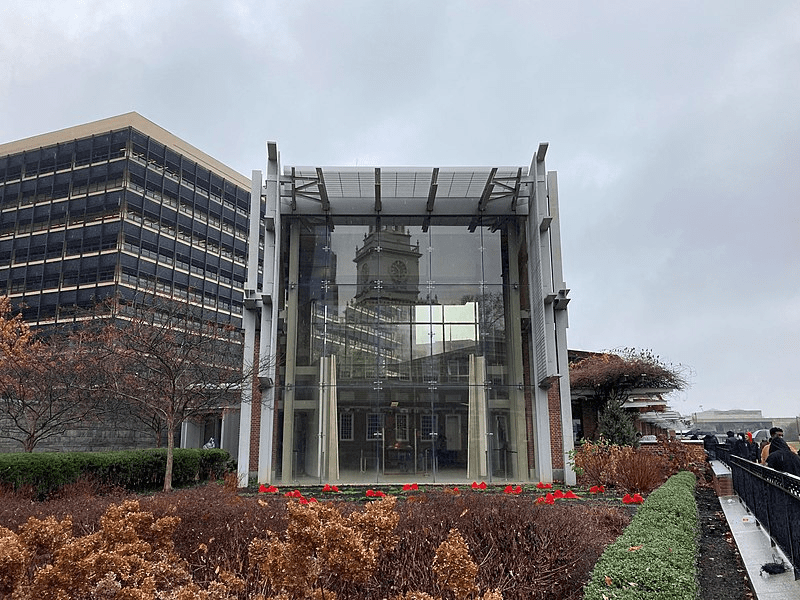
Photo source: en.wikipedia.org
After that, it was decided to place the bell in an inaccessible place. Now it is forbidden to touch it and everyone approaching the Liberty Bell is checked. The authorities fear repeating history.